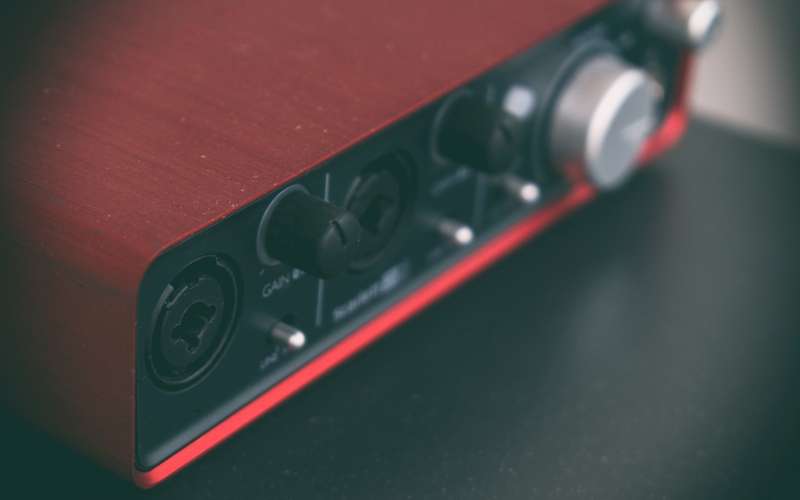Learning to sing at home can be a rewarding and enjoyable experience, especially if you’re not yet ready for formal lessons or simply want to improve your skills at your own pace.
With the right approach and dedication, you can teach yourself to sing better without having to step outside of your comfort zone.
There are several methods proven to be effective in helping individuals develop their singing abilities. From mastering breathing techniques to practicing vocal exercises, you’re bound to discover the best approach that suits your unique needs and learning style.
Embrace the journey of finding your singing voice and enjoy the process of growing as a singer in the comfort of your own home.
With a myriad of online resources available, it’s become easier than ever to access singing tips, tutorials, and exercises that suit your needs. So, let’s dive into the fundamentals of learning to sing at home, and explore the possibilities that await you on this musical adventure.
Getting Started
Setting Clear Goals
Before diving into learning singing at home, it’s essential to set clear goals for yourself. Having a goal in mind will help you stay focused and motivated on your singing journey.
Some goals might include improving your tone, increasing your vocal range, mastering a particular song, or even preparing for a performance. Remember to keep your goals realistic and achievable, and don’t be afraid to adjust them as you progress.
Creating a Practice Schedule
Consistency is key to developing your singing skills. Create a practice schedule that works for you and stick to it. Determine how many times per week you’d like to practice and for how long, and try to be consistent.
You might want to start with shorter practice sessions and gradually increase the duration as you become more comfortable. It’s also important to allocate enough time for warm-ups, vocal exercises, and song practice.
Keep in mind, that it’s better to practice regularly for shorter periods than to cram lengthy sessions sporadically.
Finding Your Voice Range
Understanding your voice range is crucial in determining which songs and techniques are best suited for you. To find your range, start by singing a comfortable note and then gradually move higher and lower in pitch until you reach your limits. Your range will span from the lowest note you can comfortably sing to the highest.
Familiarize yourself with the different voice types, such as soprano, alto, tenor, and bass, to better understand your range and capabilities. Knowing your voice type helps you choose songs that suit your vocal capabilities and work on areas where you need improvement.
Some common voice types include:
- Soprano: A high female voice, known for its bright and powerful sound.
- Mezzo-soprano: A female voice that lies between soprano and alto, often characterized by a warm and rich tone.
- Alto: The lowest female voice, with a deep and resonant quality.
- Tenor: The highest male voice, featuring a clear and bright timbre.
- Baritone: A male voice that falls between tenor and bass, typically characterized by a warm and robust sound.
- Bass: The lowest male voice, known for its deep and powerful resonance.
To determine your voice type, you can try singing various songs and note the range and quality of your singing voice. It might be helpful to seek guidance from a vocal coach or experienced singer to accurately assess your voice type.
In order to learn how to sing at home, it’s important to understand the basics of singing. This includes familiarizing yourself with different voice types and learning to read sheet music. By mastering these fundamentals, you will have a strong foundation to build upon in your singing journey.
Reading Sheet Music

While learning to read sheet music is not necessary for singing, it can help develop musicality and accuracy in singing. Additionally, being able to read sheet music can be useful in group singing situations, such as choirs or ensembles.
Reading sheet music enables you to understand the musical notation and interpret the melody and rhythm of a song. To learn how to read sheet music, begin with these basic elements:
- Staff: A set of five horizontal lines on which musical notes are written.
- Clef: A symbol indicating the pitch of notes on the staff. The two most common clefs are the treble clef (for higher-pitched voices) and the bass clef (for lower-pitched voices).
- Notes: Musical symbols representing specific pitches. Each note has a letter name (A-G) and corresponds to a specific line or space on the staff.
- Key Signature: A set of sharps or flats at the beginning of the staff that indicates the key in which the song is written.
- Time Signature: A pair of numbers at the beginning of the staff representing the rhythm and meter of the music.
Start by familiarizing yourself with these elements and practice reading sheet music regularly. This will help you better understand the structure of songs, improve your sight-reading skills, and enhance your overall musicianship.
Remember to be patient and consistent in your practice. By understanding the basics of voice types and reading sheet music, you’ll be well on your way to learning how to sing at home in a more effective and enjoyable manner.
Training Techniques
Breathing Exercises
One of the essential foundations of singing is learning proper breathing techniques. As you begin practicing at home, it’s crucial to develop good breath control.
Try diaphragmatic breathing, which focuses on using the diaphragm – the large muscle located at the bottom of your ribcage separated from your abdominal muscles. Inhale deeply, allowing your lower abdomen to expand while keeping your shoulders relaxed. Then, exhale fully and steadily. Repeat this exercise a few times to improve your breath support while singing.
Vocal Warm Ups
Before diving into singing, give your voice a proper warm-up to prevent injuries. Start with vocal cord stretches to loosen and prepare your voice for singing.
Begin with gentle humming, and then progress to scales and simple exercises, such as ascending and descending through pitches on different vowel sounds. Remember to keep your vocal warm-ups within your comfortable vocal range, and gradually expand as you become more comfortable.
Pitch Training
Developing an accurate sense of pitch is vital for any singer. One helpful method to train your ear for pitch accuracy is using Solfege. Familiarize yourself with the Solfege syllables (Do, Re, Mi, Fa, Sol, La, Ti, Do) and practice singing them in various patterns and scales.
Apps and online tools, like metronomes and pitch trainers, can also assist you in honing your pitch skills. Regular practice with these exercises will help you become more confident and precise in your singing.
Selecting Songs to Learn
When you want to learn to sing at home, it’s important to choose songs that suit your skill level and vocal range. Start by considering simple melodies with fewer intervals and pauses between notes, making them easy to follow and practice.
Another aspect to look for in songs is whether the range is limited and comfortable for your voice. A few great examples of easy songs to sing for beginners include Ain’t No Sunshine by Bill Withers or Happy Birthday, as they offer repetitive, simple tunes that even those new to singing can achieve.
In addition to selecting songs with a simple melody, pay attention to the lyrics. Choose songs that have meaningful or relatable lyrics to keep you invested in your singing journey. This will make it more enjoyable and might help you learn faster.
Once you feel comfortable with the basics, gradually progress to more complex songs with a larger range and more intricate melodies. This will challenge and develop your singing skills further. Remember, practice is essential, so be consistent and patient with yourself during the process.
By following these guidelines and selecting appropriate songs to learn, you’re well on your way to improving your singing abilities from the comfort of your own home.
Investing in Equipment

Microphones
Investing in a good microphone is essential when learning to sing at home. A quality microphone will capture your voice accurately and improve your overall singing experience.
There are countless options on the market, but one good XLR microphone is a great choice for beginners. When choosing a microphone, consider your budget and the specific needs of your practice space. Also, don’t forget to invest in a microphone stand and a pop filter to enhance your recordings.
Headphones
Singing at home can be a noisy affair, and having a quality pair of headphones will help you focus and monitor your vocal performance. Closed-back headphones are a great option because they provide sound isolation and prevent audio leakage.
Comfort is also important – you want headphones that do not hurt your ears and can be worn for extended periods. Depending on your setup, you may need to invest in an extension cable or a headphones amplifier.

Digital Recording Tools
Digital audio workstations (DAWs) and audio interfaces are essential tools for home recording. Audio interfaces help convert audio signals from your microphone into digital information your computer can understand. Some popular audio interfaces include USB and FireWire options.
On the other hand, DAWs are software applications used to record, edit, and mix your vocals. There are many DAWs available, from free options like Audacity to professional software like Pro Tools. Do some research to find the best DAW for your needs and budget.
Remember, investing in equipment isn’t only about buying expensive gear. Look for budget-friendly options and focus on building a functional setup that allows you to learn and practice effectively.
Online Resources
As you’re looking to learn singing at home, exploring online resources can be incredibly helpful. Let’s dive into some sub-sections that cover various tools and platforms you can use in your journey.
Mobile Apps
Mobile apps are fantastic for those who want to learn singing at their fingertips. There are apps that provide vocal warm-ups, breathing exercises, and pitch training essential for improving your singing skills. Browse through app stores to find one that suits your needs and schedule. Keep in mind to check reviews and ratings to make sure the app is user-friendly and helpful.
Online Videos
Online tutorials and video lessons can be a treasure trove for learning to sing. Websites like Udemy and Course Retriever offer a variety of singing courses that cater to different goals and levels of experience.
Additionally, YouTube has a wealth of video resources on singing, where you can find tips, tricks, and demonstrations by established singers and vocal coaches.
Virtual Coaching
If you’re seeking a more personalized learning experience, consider virtual coaching. Platforms like 30 Day Singer connect aspiring singers with experienced instructors for one-on-one tuition.
Virtual coaching can provide tailored guidance on various singing techniques, pitch control, and breath management. This option is perfect for getting feedback on your singing progress and addressing any specific challenges you might face. Remember to research and choose the right coach for your goals and budget.
Incorporating these online resources into your daily routine can bring you closer to achieving your singing dreams while learning at home.
Embrace the digital age and make the most of the tools available with a friendly, open-minded approach. Happy singing!

